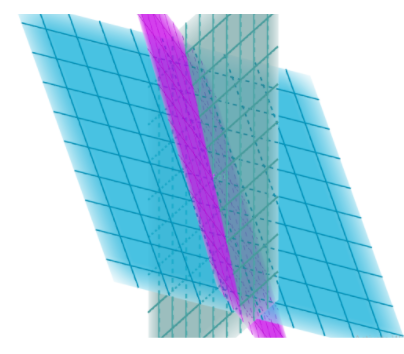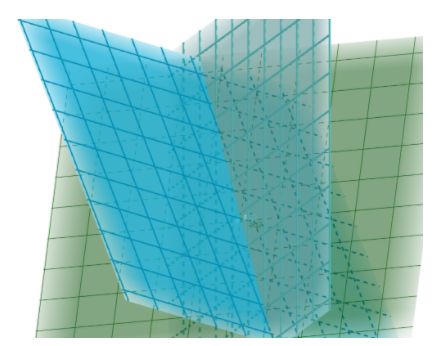Question
Question: The equation of the plane bisecting the angle between the planes 3x+4y = 4 and 6x-2y+3z+5=0 containi...
The equation of the plane bisecting the angle between the planes 3x+4y = 4 and 6x-2y+3z+5=0 containing the origin is
[a] 9x-38y+15z+43=0
[b] 51x+18y+15z=3
[c] 9x+2y+3z+1=0
[d] 17x+9y+15z=26
Solution
Use the fact that the angle between two planes is the angle between their normal. Hence if a plane bisects the angle between the planes, then the normal vector of the bisector plane must be in plane with the normal vectors of the other two planes and make equal angles with them. Use the theorem in the plane, i.e. if a and b are two non-collinear vectors in a plane, then every vector in that plane is a linear combination of the vectors if a and b. Use the fact that the angle between two vectors a and b is given by cosθ=aba⋅b. Hence find the normal vector of the bisector plane and hence find the equation of the plane.
Complete step-by-step solution:
__
The grey plane is the plane 3x+4y = 4 and the blue plane is the plane 6x-2y+3z+5 = 0.
The purple plane is the bisector plane of the angle containing the origin.

The green plane is the bisector plane of the angle not containing the origin
We know that the normal vector of the plane ax+by+cz=d is given by n=ai+bj+ck
Hence, we have
The normal vector of the plane 3x+4y=4 is given by n=3i+4j
Again, we have
The normal vector of the plane 6x−2y+3z+5=0 is given by m=6i−2j+3k
We know that the angle between two planes is the angle between their normal. Hence if a plane bisects the angle between the planes, then the normal vector of the bisector plane must be in plane with the normal vectors of the other two planes and make equal angles with them.
Let the normal vector of the bisector plane by v.
Hence by theorem in the plane, we have
v=λm+μn=(6λ+3μ)i+(−2λ+4μ)j+3λk
Now, since v is the normal vector of the bisector plane, we have
∣m∣∣v∣m⋅v=∣n∣∣v∣n⋅v⇒∣m∣m⋅v=∣n∣n⋅v
Hence, we have
